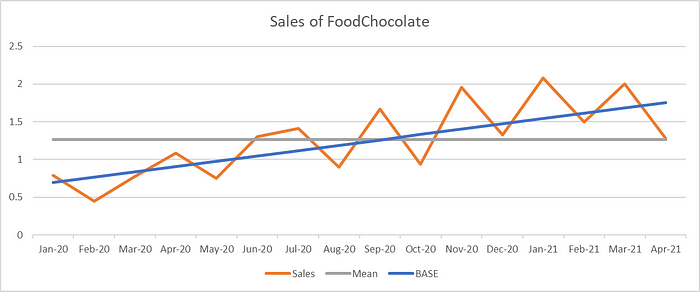Market Mix Modelling (MMM) Approach
Overview
MMM analysis is one of the foundation topics in Data Science. Despite, all the hype around Neural Networks & Machine Learning, Linear Regression MMM is still among the most sought skill in the market.
There is a strong logic behind it, Even in the coming years' companies are going to spend billions on advertising and so it becomes very crucial for them to understand the impact of the different marketing streams they are using. Secondly, as you will read the articles you will understand the challenges involved in automating the MMM analysis. These two reasons underline the fact that MMM is going to stay in the market. So building this skill becomes crucial for Data-Scientist.
What question we are trying to answer
Most importantly Client is seeking to know which advertisement streams have been most effective in attracting customers and where should the company invest its next marketing dollar. Let’s go into little details —
Suppose, there is CPG company FoodChocolate which sells different kinds of chocolates. The company is deploying multiple marketing channels like:-
- Social Media Marketing (Facebook Ads, Instagram Ads, Twitter Ads)
- Google Search ADs
- Sales Reps Calls to Retailers
- Display Banners
- Display Videos
- Youtube Videos ADs
- TV Ads
- Print Media — Newspaper & Magazines Ads
- Influential Marketing
FoodChocolate has a total budget of $10 million for the next quarter. Now a million-dollar question? Should it spend all the money on Social Media Marketing, or should it select multiple channels for marketing? If yes how much allocation should be done in each of the channels?
Evaluation
Before understanding the methodology, let's understand what are the things we need to look at. This will lay the foundation and help you appreciate the methodology.
Broadly, there are three things we need to look at
- Contribution — it refers to the percentage share of the advertisement channel in the sales. For e.g., 4% contribution of social media marketing would mean that of the total sales 4% of FoodChocolate sales can be attributed to the particular marketing channel.
- ROI — Return on investment is a very crucial factor for any MMM analysis. It is simple, Total Contribution sales/Spend. ROI of 2 for Social Media Marketing would signify that each dollar spent FoodChocolate generated sales of $2.
- Model Statistics — Being Data scientists it is our moral duty to make statistically significant models.
- Response Curves — It is used to decipher the optimal spend for each marketing activity. If FoodChocolate keeps spending money on social media marketing it doesn’t necessarily mean it will keep on adding customers indefinitely, there is always a saturation point where additional spending will not generate the desired sales.
Methodology
Now let’s dive into the main part, You might be wondering, by now I understand what Contribution, and ROI and I appreciate their usage. But how to calculate the contributions? Exactly this is what we will explore in the next section
Intuition — Before jumping to methodology let’s develop basic intuition around what we are trying to model. What basically we are trying to do is to capture the impact of change in the marketing activity on the sales from the past data. Essentially, when FoodChocolate was doing its marketing, there would be changes in the marketing activity in the past, it would not be consistent, they would have sometimes spent more on Social Media while other times they would have spent more on Youtube. Now basis that your sales will fluctuate as well and what we are trying is to give a mathematical model to this change so that we can quantify the impact of marketing on sales.
Now it’s important to understand another crucial component, BASE. What if FoodChocolate stop all marketing, will their sales become 0? Absolutely Not! It would undoubtedly decrease but will not become zero. So this contribution is basically referred to as the BASE Contribution.
Let me now share the four fundamental steps of MMM Modelling-
- Trend Capturing
- Transformation of the variables — Adstock, Power, Lag
- Linear Regression Model
- Bayesian optimization
Trend Capturing — This is a baseline you want to use as the Base Sales (without any marketing). In simple terms, we are trying to capture long-term trend, refer to the image below:

The above picture clearly explains why we call the base sales line the trend line because it tries to capture the long-term trend of the sales. Now our next objective is to try to model the dips & peaks in the sales based on the independent variables which will be marketing variables.
Transformation of the Variables — To understand the transformation of the variables, let us understand why we use transformation.
The basis of the transformation of the variables in the MMM lies in the marketing theory. There are 3 types of transformations:-
- Adstock — Carryover Impact of the Marketing
- Power — Saturation Effect of the Marketing
- Lag — Lag between the marketing activity & the sales
Adstock:- Marketing done today will have some residual impact on the mind of consumers which will gradually decrease with time.
Power:-As mentioned earlier, every marketing period has a life period. Initially, a small marketing increase generates a lot of consumers but after a certain point it starts getting saturated and the same amount of increase in marketing produces less incremental sales.
Lag:-This simply means that if I see the ad for FoodChocolate today, I will do the purchase the next day.
Linear Regression Model — Now this is where we do real modelling. We try to fit the linear regression model. Now people may argue that there are so many advanced machine learning techniques available in the market the why linear regression? Because of its Simplicity & Explainability. Because you clearly know if you get a certain coefficient you know that if you increase the marketing by $1 how much sales you can expect?
Bayesian optimization — Now bayesian is something which scares many people including me. So here I will only be sharing the purpose of using it and mathematical details are something we can talk about in some other article. Now the basic idea of Bayesian is to attribute the right contribution to each variable. Confused?
Let’s take the example of FoodChocolate, now there’s a child who sees the TV ad for FoodChocolate which interests him to buy it. So he went to google, search for it and from the first advertisement link of FoodChocolate he ordered it. But when we will be modelling all this contribution will go into the account of Paid Search but actually it was the combination of the 2 that led to the sale. So accounting for such the complex relationships is the role of complex Bayesian :)
So this is the high-level view of MMM Modelling. Hope you enjoyed reading it!
To find more interesting stuff! Check out my blog https://www.analytixtime.com
